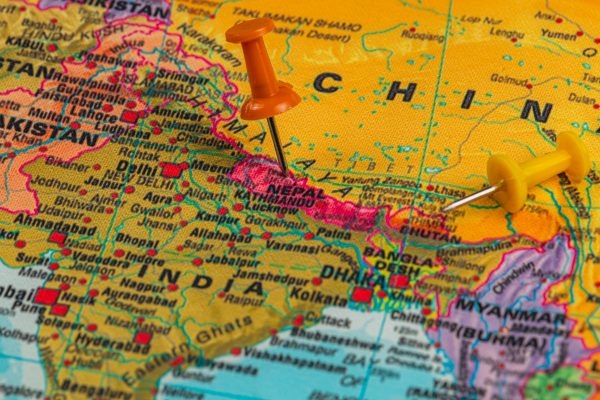By Elizabeth Roche
Copyright thediplomat

Political unrest has once again roiled India’s neighborhood. In 2022 and 2024, people’s anger against corrupt and inept governance forced out elected governments in Sri Lanka and Bangladesh, respectively. Earlier this month, it was the turn of another of India’s neighbors, Nepal. On September 9, Prime Minister KP Sharma Oli resigned a day after violent protests led by Gen-Z erupted in the capital Kathmandu and quickly spread to other cities. A new interim prime minister, Sushila Karki, was sworn in on September 13. Karki, a former chief justice of Nepal who was chosen by the protestors, aged mainly between 13 and 28 years, now has the formidable task of guiding the reconstruction of the country’s institutions, literally and figuratively. While discontent with governance has been simmering for a while in Nepal, the implosion of the Nepali government was sudden and caught neighboring India off guard. India surrounds Nepal on three sides and provides the landlocked Himalayan country with access to the sea. It plays a major role not only in Nepal’s trade and economic development but also in its domestic politics. New Delhi was preparing to host Oli on his first visit after a change of government in July 2024. India’s Foreign Secretary Vikram Misri was in Kathmandu on August 18 to invite Oli to visit India on September 16 for the long-overdue visit. Traditionally, India has been the first port of call for any new prime minister and foreign minister of Nepal. However, Oli visited China, Nepal’s northern neighbor and India’s strategic rival, first. It is widely believed that with an invitation from India to visit not materializing — New Delhi is said to be upset with Oli’s pro-China policies — Oli headed to Beijing in December. Nepal is key to India’s national security. The two countries share a 1,750-km-long open border. To Nepal’s north is China. India, therefore, needs a neutral administration in Nepal, if not an India-friendly one that would be sensitive to its security concerns. In addition to concerns about a possible threat from China, India is apprehensive that arch-rival Pakistan could use Nepal as a base for its intelligence operatives to foment trouble for India. In December 1999, an Indian Airlines passenger aircraft was hijacked while on its way from Kathmandu to New Delhi by five Pakistani terrorists. The possibility of Pakistan infiltrating terrorists into India via the porous border cannot be ruled out. Besides security, Nepal and India have what they describe as a “roti-beti” relationship, one that is strengthened by close cultural bonds and kinship ties. Millions of Nepalis live and work in India. There are strong ties between the Indian and Nepali armies too; they designate their army chiefs as honorary generals in the other’s army. India and Nepal are partners in several regional connectivity and economic initiatives, such as the BBIN (Bangladesh, Bhutan, India, and Nepal) Motor Vehicle Connectivity Initiative, and BIMSTEC, which brings together several Bay of Bengal littoral countries. Given this special relationship between India and Nepal, New Delhi will be keen to establish a good working relationship with the new interim government and also to stabilize Nepal. That Karki is India-educated, and her familiarity with India and the Indian leadership, could be an asset as she seeks to bring back normalcy to her country. Prime Minister Narendra Modi assured his Nepali counterpart of India’s “steadfast support” in these efforts during a telephone conversation on September 18. On its part, India needs to handle the situation with a light touch – supportive of the ordinary people but not seen to be meddling in Nepal’s domestic affairs. In 2015, when Nepal introduced a new constitution, New Delhi was seen as encouraging protestors, who imposed a blockade, seeking changes in the document. The blockade meant essential goods, including fuel and medicines from India, could not reach the people, who were facing hardship after surviving a devastating earthquake that struck Nepal that same year. This had fueled anti-India sentiment that politicians like Oli were quick to exploit to establish closer ties with China. India has often been criticized in Nepal for its big brother behavior. Since 2015, however, India has been making quiet but serious attempts to mend its image and shore up goodwill among the Nepalis by speeding up completion of high-impact community development projects like building schools, drinking water projects, irrigation amenities, and rural health centers. It was frustration with successive governments failing to provide economic opportunities for Nepali youth, widespread corruption and self-serving politics of Nepali politicians across political parties that ignited the recent protests in Nepal. There was festering anger too over the luxurious lifestyles of “nepo babies,” the sons and daughters of Nepali politicians and other affluent Nepalis. While the roots of the recent crisis lie in Nepal, India could work toward assuaging the grievances of Nepali youth by persuading its industries to channel more investment into Nepal once the situation stabilizes. Trade with India comprises about 63 percent of Nepal’s total trade, which was worth $8.02 billion in 2023-24. India is Nepal’s largest export destination, receiving an overwhelming 67.71 percent of its total exports. One sector of the Nepali economy that remains underdeveloped is hydel power. Nepal has vast hydroelectric power generation capacity that can be developed for export to India. India must tread carefully in this regard. It must ensure that deals done are not exploitative for it to benefit Nepal. While extending a helping hand, India should be careful not to be seen as influencing Nepali politics in any way. Its support to certain parties—it is generally seen to be close to the Nepali Congress—and sections of the Nepali polity have always been a sore point with the Nepali people. New Delhi should be seen as willing to work with the politicians elected by the Nepali people. A new crop of politicians is expected to emerge in the coming months. India has been engaging with newer sections of Nepal’s polity in recent years. It must broaden this outreach.